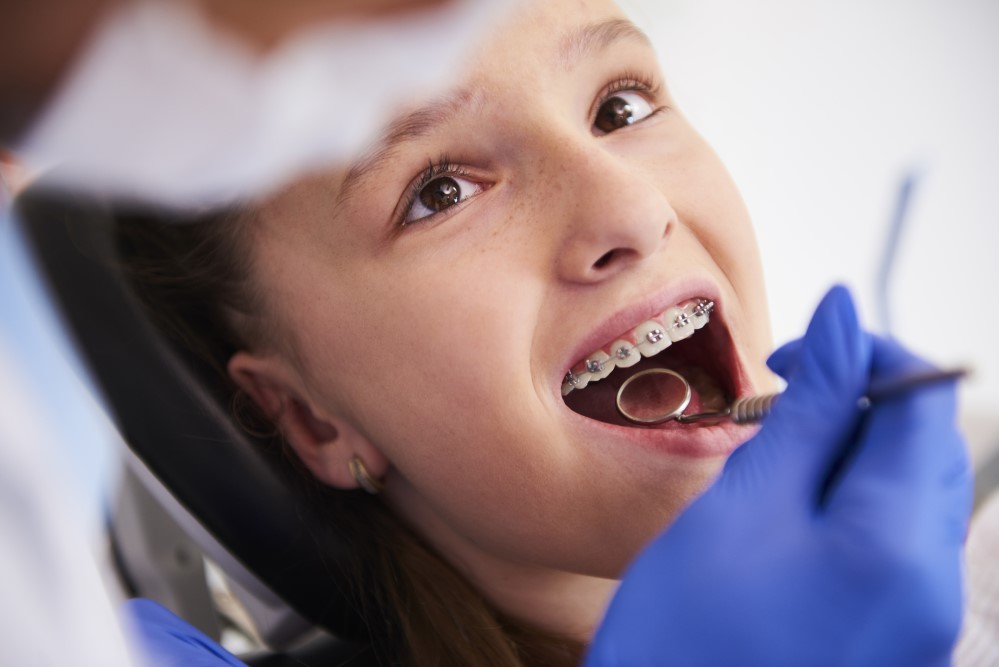Two-phase treatment is a specialized orthodontic treatment for children. It combines teeth straightening and creating a functional bite. This treatment creates a proper foundation for normal jaw development and eruption of permanent teeth. Early or late loss of baby teeth, crowded or misplaced teeth, overbites, underbites, crossbites and other such oral problems can be treated at an early age with this orthodontic treatment.
What is Phase 1 Orthodontic Treatment?
Phase I orthodontic treatment, otherwise known as an early interceptive treatment, is an orthodontic procedure that is done for children before all of their permanent teeth erupt, and often occurs between the ages of six and ten. This type of treatment is generally recommended by pediatric orthodontists when there are chances of a moderate or severe orthodontic problem occurring early in the child’s life and waiting is not recommended. On the other hand, Phase I treatment is also not recommended unless the orthodontist is sure that he/she can make a significant difference in their patient’s final outcome by performing this procedure.
The primary goal of Phase-One orthodontic treatment is to ensure enough room for permanent teeth, which will reduce the risk of overcrowding, which inevitably leads to crooked teeth. Phase-One treats bite growth and the jaw, including issues such as crossbite or underbite. So in cases where the upper or lower jaw of the child isn’t growing at the desired level can benefit from this early orthodontic treatment. Such early correction can often prevent future instances of dental trauma, avoid chances of permanent tooth removal and even jaw surgery. Leaving such dental issues untreated, may require the child to get braces later on in life. The treatment time for Phase I procedure usually varies between 9-18 months. After this, the child is given retainers which are checked every four to six months while waiting for the remaining teeth to erupt.
Common Orthodontic Therapies Used in Phase 1 Treatment
- Specialized retainers
- Headgear
- Limited phase of braces (selected teeth)
- Space maintainers
- Functional appliances
- Expansion appliances
What is Phase 2 Orthodontic Treatment?
Phase-Two orthodontic treatment is what most of us are familiar with. Phase-Two occurs when braces are placed on the upper and/or lower teeth. Not only does this phase correct spaces and ameliorate misaligned teeth, but it also corrects overbite or underbite concerns. Phase-Two typically begins around the age of 11 or 12. This phase of orthodontic treatment usually lasts an average of 12-20 months, but, as always, each case is different, depending on the individual. Some children may need braces for up to four years, while others have fewer issues and may need to wear them only a year or so.
However, many-a-times parents wonder if a Two-phase treatment is really required or if they can directly go for Phase II treatment plans once their child is of age. Honestly, there is no right answer to this question as the treatment procedure varies from one child to another and this decision can only be made upon through consultation with your orthodontist. Your orthodontist is the best person to help you understand all possible scenarios so that you can make a well-informed decision and ultimately, the right one for your child!
Signs of Needing Two-Phase Orthodontic Treatment
Any of the following signs may indicate your child is a good candidate for Two-Phase treatment:
- Losing baby teeth early (before age 5)
- Biting or chewing problems
- Thumb-sucking after age 5
- If the teeth don’t come together properly when opening, or any evidence of crossbite
- If teeth become crowded at age 7 or 8
- Protruding upper or lower teeth
If you are looking for more information on two-phase orthodontic treatment, book an appointment with Dr. Brian right away!

Dr. Brian Thurman has spent his entire life enjoying all the beauty that California has to offer. A Fresno native, he still escapes to the ocean or the mountains whenever his busy schedule allows. Driven by his love for natural beauty, Dr. Thurman enjoys creating beautiful smiles and healthy bites that last a lifetime. He is proud to be the only Ivy League trained Orthodontist in the Fresno/Clovis area.

